Directions (1-5): Study the information carefully and answer the questions given below.
Six friends P, Q, R, S, T and U are from different places of India i.e., Manali, Dharamshala, Leh, Jaipur, Agra and Darjeeling. They all are planning to go on ride through different bikes i.e., Hero, Suzuki, Honda, Java, Bmw and Ktm. All information is not necessarily in same order.
R rides Java and he is from Manali. The one who rides Suzuki is not from Jaipur and Leh. P is from Darjeeling. The one who is from Agra rides hero. T rides Ktm. The one who is from Leh doesn’t ride ktm. U isn’t from Leh. P doesn’t ride Bmw and Suzuki. S is not from leh and Dharamshala.
Q1. Who among the following is from Agra?
(a) P
(b) T
(c) S
(d) R
(e) None of these
Q2. T belongs to which of the following place?
(a) Jaipur
(b) Manali
(c) leh
(d) Dharamshala
(e) None of these
Q3. Q rides on which of the following bikes?
(a) Hero
(b) Bmw
(c) Java
(d) Suzuki
(e) None of these
Q4. Which of the following statement is true?
(a) Q- Darjeeling
(b) T- Agra
(c) U-Dharamshala
(d) S-Jaipur
(e) None of these
Q5. P rides on which of the following bikes?
(a) Bmw
(b) Honda
(c) Hero
(d) Ktm
(e) None of these
Direction (6-8): Study the given information and answer the following question.
Point J is 21m north of R. Point R is 5m east of Q. Point Q is 15m south of V. Point V is 10m west of T. Point T is 18m east of K. Point K is 10m south of M.
Q6. What is the shortest distance between J and K?
(a) 5√41m
(b) 14m
(c) 15m
(d) 11m
(e) None of these
Q7. Point V is in which direction with respect to M?
(a) South
(b) North-East
(c) West
(d) South-West
(e) None of these
Q8. In which direction point Q with respect to T?
(a) South-east
(b) South-west
(c) North
(d) North-west
(e) None of these
Directions (9-10): In these questions, relationship between different elements is show in the statements. The statements are followed by conclusions. Study the conclusions based on the given statements and select the appropriate answer:
(a) If only conclusion I follows.
(b) If only conclusion II follows.
(c) If either conclusion I or II follows
(d) If neither conclusion I nor II follows.
(e) If both conclusions I and II follow.
Q9. Statements: D>H≥B>N>T=Y<M>E≥R
Conclusion I: M>N
II: H>Y
Q10. Statements: T>R<W≥E>C=V≥D≤F
Conclusion I: R>C
II: W≥D
Directions (11-15): In each of the questions below some statements are given followed by some Conclusions. You have to take the given statements to be true even, if they seem to be at variance from commonly known facts. Read all the conclusions and then decide which of the given conclusions logically follows from the given statements disregarding commonly known facts.
(a) If only conclusion II follows.
(b) If only conclusion I follows.
(c) If both conclusions I and II follow.
(d) If neither conclusion I nor II follows.
(e) If either conclusion I or II follows.
Q11. Statements: Some audio are video
All video are movie
No movie is bad
Conclusion: I: Some audio are not bad
II: No video is bad
Q12. Statements: Only a few Mango are apple
Some apple are Grapes
No grapes is Fruit
Conclusion: I: Some mango are not fruit
II: All apple can never be fruit
Q13. Statements: Only Red is blue
Only a few red is green
No green is Pink
Conclusions: I. Some blue can be green
II. All pink can never be red
Q14. Statements: All Potato is Onion
Some Onion is costly
All costly is tomato
Conclusions: I. Some tomato are potato
II. No potato are tomato
Q15. Statements: All knife is wood
All wood is grass
All grass is nature
Conclusions: I: Some nature are wood
II: All grass is knife
Solutions
Solution (1-5):
Sol.
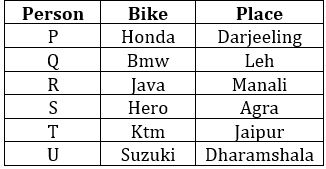
S1. Ans. (c)
S2. Ans. (a)
S3. Ans. (b)
S4. Ans. (c)
S5. Ans. (b)
Solutions (6-8):
Sol.
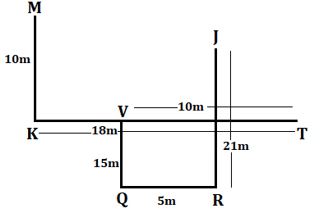
S6. Ans. (e)
S7. Ans. (e)
S8. Ans. (b)
S9. Ans(b)
Sol. I: M>N(False)
II: H>Y(True)
S10. Ans(d)
Sol. I: R>C(False)
II: W≥D (False)
S11. Ans. (c)
Sol.
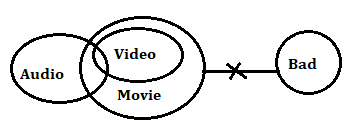
S12. Ans. (a)
Sol.

S13. Ans. (d)
Sol.
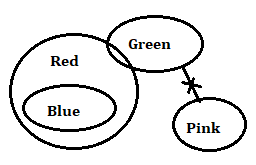
S14. Ans. (e)
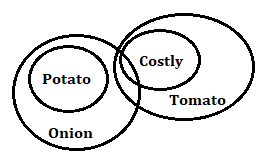
S15. Ans. (b)
Sol.
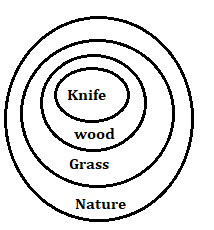





 GA Capsule for SBI Clerk Mains 2025, Dow...
GA Capsule for SBI Clerk Mains 2025, Dow...
 The Hindu Review October 2022: Download ...
The Hindu Review October 2022: Download ...
 Delhi CSIR CRRI Recruitment 2025 Notific...
Delhi CSIR CRRI Recruitment 2025 Notific...







